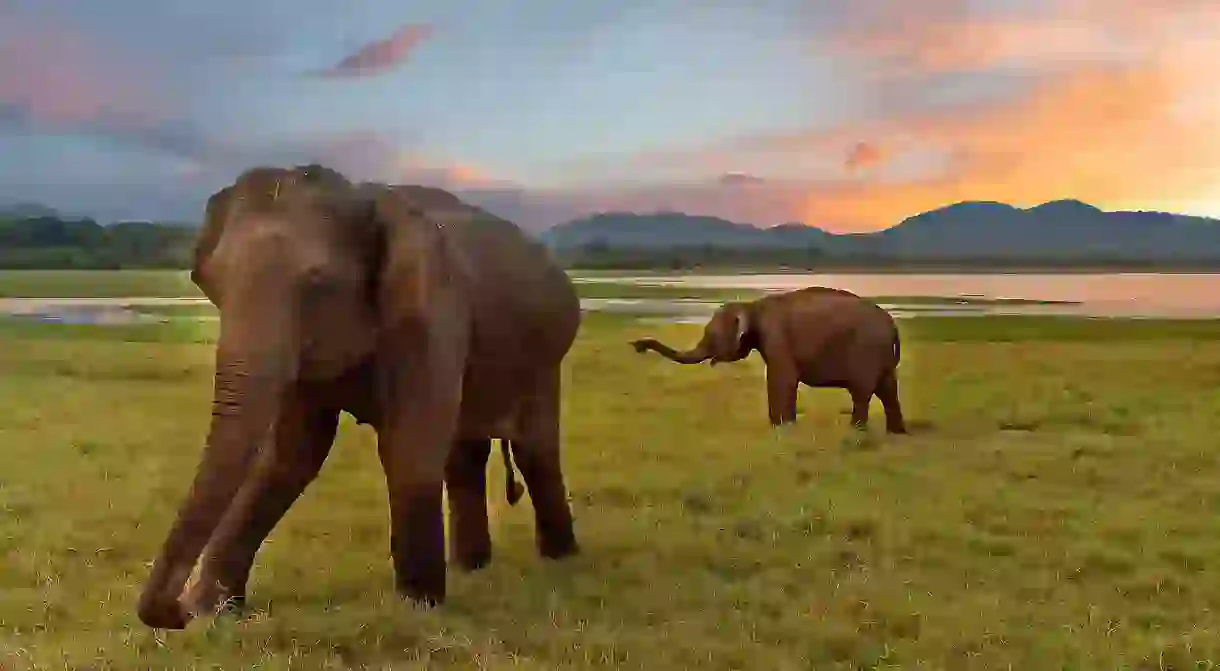Amazing Animals You Can See in Sri Lanka

Sri Lanka is a wildlife-lover’s paradise. Expect to see elephants, leopards, monkeys, whales… but only if you know where to look. Here are the most amazing animals your can see in Sri Lanka.
Get up close and personal with Sri Lanka’s wildlife by booking an exclusive experience with Culture Trip chronicling the country’s vibrant nature and fascinating historical landmarks.
Sri Lankan elephants
The Sri Lankan elephant is one of three types of Asian elephants – you can see them on an elephant-watching safari or by visiting an elephant orphanage. Elephants can be seen in most of the national parks; you’ll find a big gathering in Minneriya National Park.
Sri Lankan leopards

The Sri Lankan leopard is larger than other leopards, sitting pretty at the top of the food chain here. However, they’re solitary creatures and tend to keep out of the spotlight. You’re certainly not guaranteed to see one on every safari you take.
Peacocks
Peacocks are native to India and Sri Lanka and are considered among the most beautiful and sacred animals here. Unfortunately, since the female of the species is not as colourful as the males, they have been hunted for their meat. Some hotels have peacocks and peafowl in their gardens.
Sri Lankan junglefowl

The Sri Lankan junglefowl, which looks a lot like a rooster, is the national bird of Sri Lanka. It is depicted in postage stamps and cannot be found anywhere else in the world.
Grey hornbill
The grey hornbill is native to Sri Lanka. It is a member of the hornbill family but the fact that it doesn’t have the top part of the beak sets it apart. The reproduction process of the grey hornbill involves the male trapping the female, and its eggs, inside a hole in a tree. He brings them food through a small opening and both adults open the covering of the hole once the babies are ready to learn to fly.
Sambar deer

The Sri Lankan sambar deer is a relatively large deer. They live in herds inside national parks, especially Horton Plains where you can see the sambar deer wandering around. The males have large antlers but the females do not.
Spotted deer
Spotted deer are the most common deer in Sri Lanka. The herds are quite large and populated. You can find spotted deer in all of the national parks, just don’t get too close to take photos.
Water buffalo

In Sri Lanka like most South Asian countries, there are wild water buffalo and domestic water buffalo. The wild water buffalo is more scarce than their domesticated cousins and can be found in the national parks. The domesticated water buffalo are used for working the fields and their milk is used for making curd, a Sri Lankan delicacy.
Toque macaque monkeys
The toque macaque monkeys are the most common monkeys seen in Sri Lanka. They are separated into dry zone, wet zone and highland. The dry zone toque macaques are known as temple monkeys since there are so many of them in the Cultural Triangle.
Langur

Langurs are the other type of monkeys found in Sri Lanka. These are considered leaf monkeys and live up in the trees. There are grey langurs and purple-faced langurs. The purple-faced langurs are endemic to Sri Lanka.
Dolphins and whales
Dolphins and whales can be seen off the south and southeast shores of Sri Lanka. The art of dolphin watching has become precarious in recent years as boats and tourists crowd the waters and follow the animal. If you really want to see the dolphins and whales off the coast of Sri Lanka, make sure you take a tour that is respectful of the wildlife. The types of whales that can be seen in these waters are blue and humpback whales. Very infrequently you might come across a dugong.
Sea turtles

In the southern town of Unawatuna, there is a sea turtle hatchery and conservation area for the protection of these delicate animals. They can sometimes be seen in the ocean, usually by surfers, but this has become increasingly uncommon due to pollution of the oceans.













